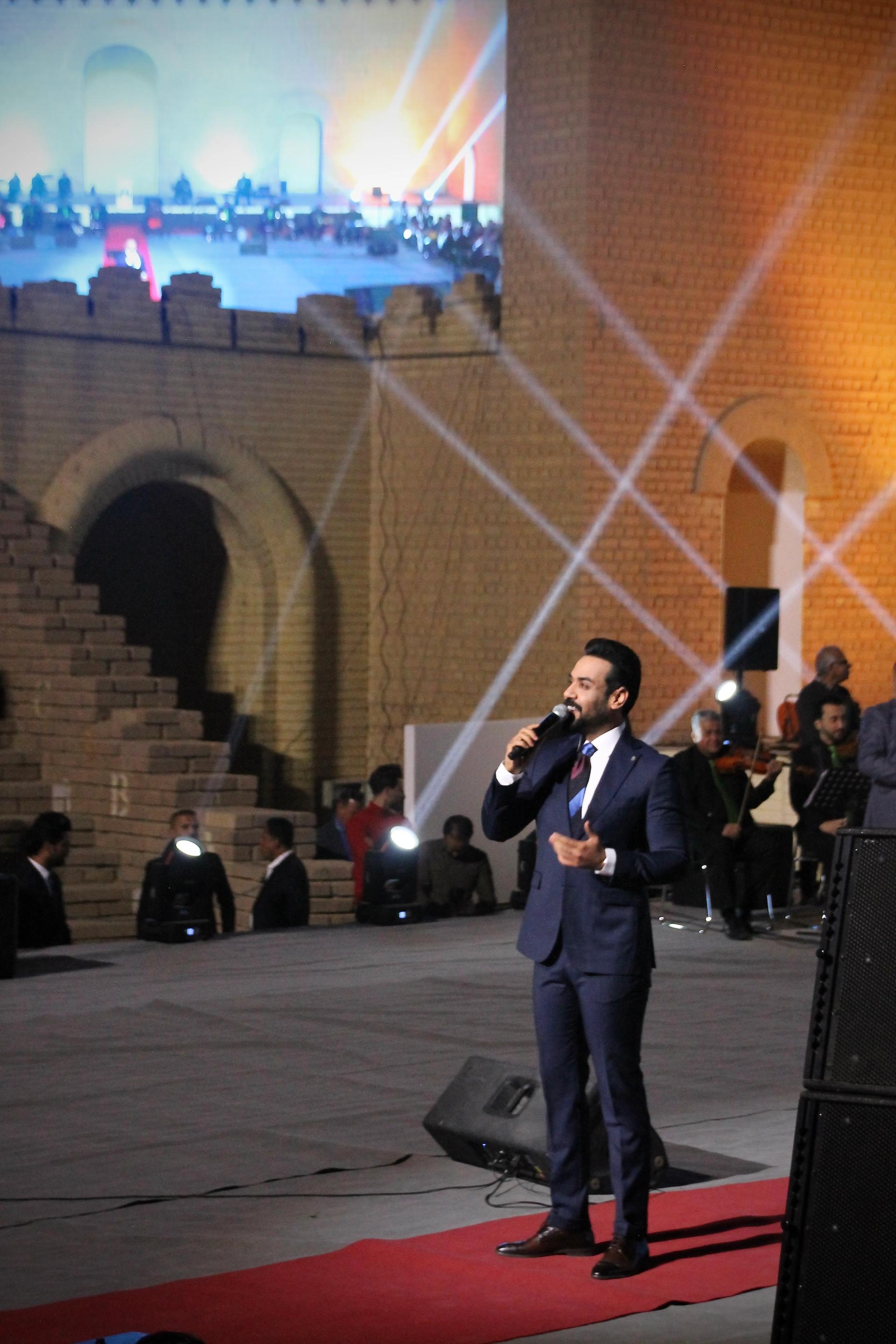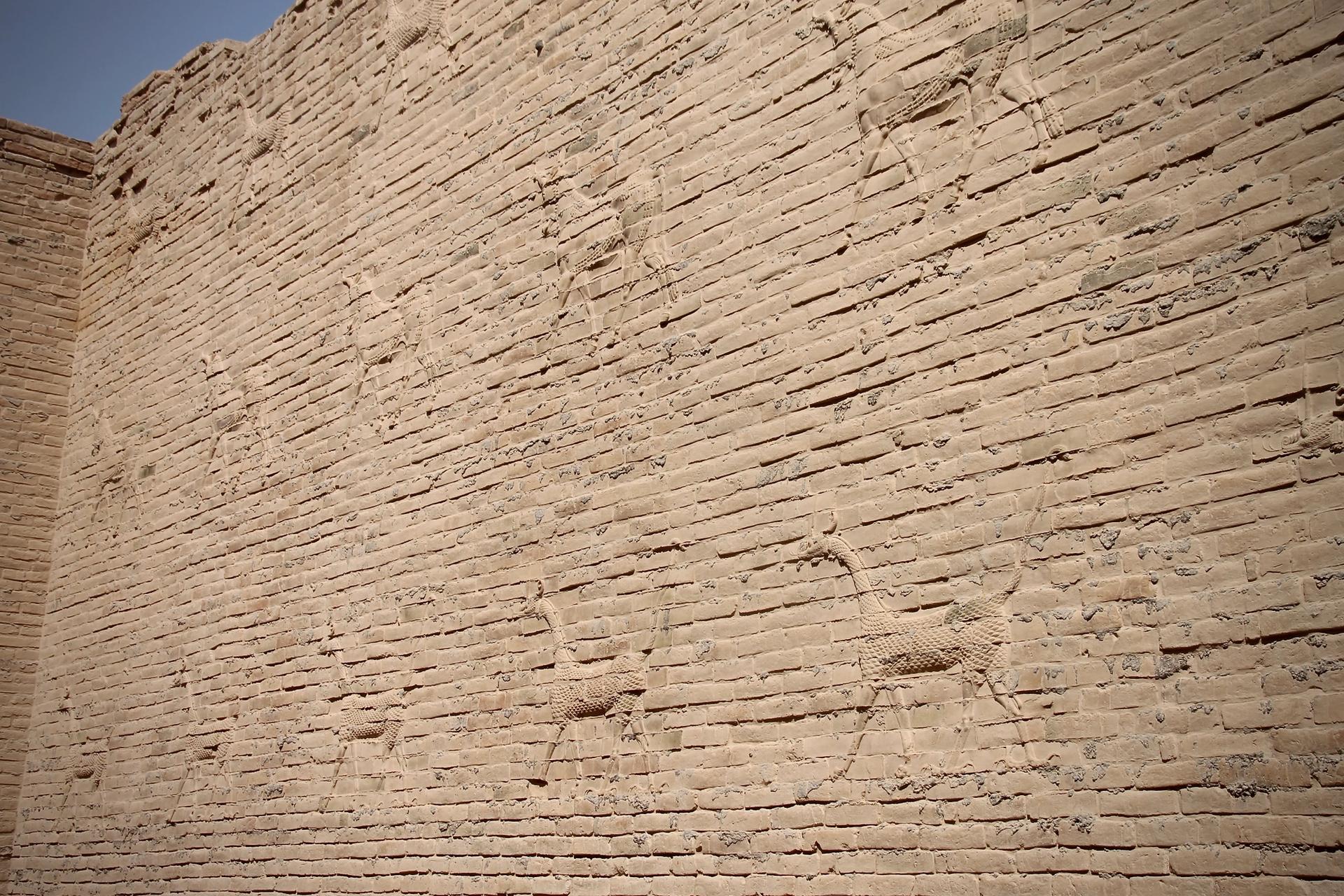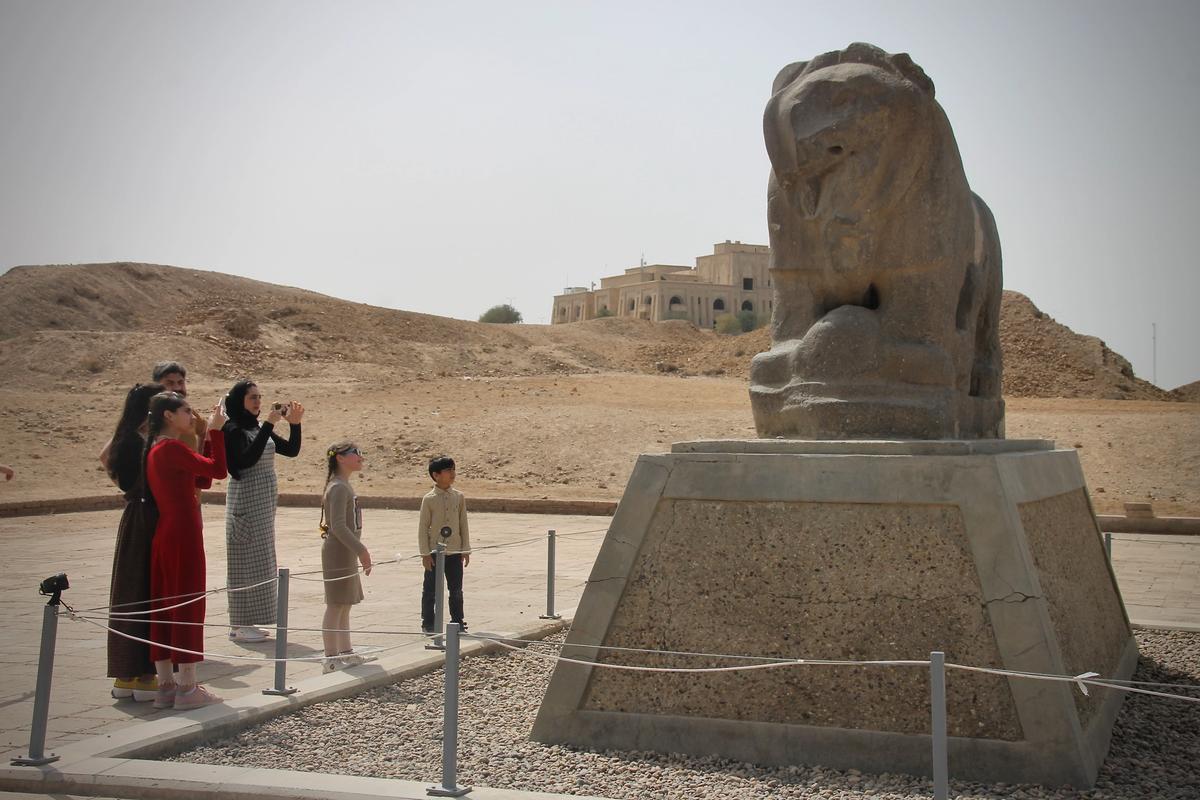A new World Monuments Fund (WMF) project in Babylon, funded as part of a $3m donation by the US embassy in Baghdad first bestowed in 2018, aims to repair and restore the famed Ishtar Gate by this summer.
As soaring melodies from a concert at the amphitheatre built by Saddam Hussein in the 1980s, on the ruins of a third-century BC foundation, drifted over from the newly revived Babylon festival, the WMF programme director Jeff Allen toldThe Art Newspaper: “The project will help usher in new tourism initiatives designed to enhance the visitor experience and help the local economy. It will also train and employ local Iraqis in heritage conservation techniques.”

The Babylon festival was revived last year and the 2022 edition is taking place this month and features the famous Iraqi singer Ali Jasim Photo: Hadani Ditmars
The new initiative is part of the WMF’s 15-year commitment to conservation efforts as part of its Future of Babylon project, initiated in 2008. Collaborating with the Iraqi State Board of Antiquities and Heritage (SBAH) until 2015, the WMF performed extensive surveys and documentation and developed conservation plans. The organisation also assisted with a Unesco World Heritage nomination for Babylon that culminated in its inscription in July 2019 and helped with the conservation and stabilisation of the Lion of Babylon. The projects at the Ishtar Gate and Ninmakh Temple, launched in 2016 and 2019 respectively, will be the beneficiaries of the US embassy funding.
Babylon was once the pet project of Saddam Hussein, who envisioned himself as a neo-Nebuchadnezzar, and often referred to a Quranic passage linking the ruler of the Babylonian Empire to the liberation of Palestine. To his credit, his budget for upkeep was much higher than the one currently managed by the Iraqi government, but his labour of love and self-aggrandisement—he had stones inscribed with his name as in other ancient sites—also involved much heavy-handed reconstruction in the 1980s and 90s, often using cement bricks and other inappropriate building materials.
Hussein’s interventions, neglect resulting from 12 years of draconian UN sanctions that bankrupted the country, and subsequent damage by military vehicles in the wake of the 2003 invasion all contributed to Babylon’s demise.

Ninmakh Temple at Babylon is undergoing urgent repairs Photo: Hadani Ditmars
Construction, too, has taken a toll over the years. In 1927, the British ran a railway line through the site, and in the 1980s Hussein built a highway through part of it, along with a palace for himself, complete with a helipad. There are still three existing but non-functioning oil pipelines, two of which were built in the 1970s and 80s and the third of which is more recent—work on it was blocked after the SBAH filed a lawsuit in 2012.
But today, with renewed internal and foreign tourism and funding from the US embassy and other international donors, Babylon is coming back to life. Its still-eerie, grandiose Hussein-era palaces and guesthouses are filled with international artists invited for the Babylon festival, and thousands of Iraqis flock here every month for parties, weddings and musical boat rides along the Euphrates river.
The current WMF work at the Ishtar Gate—the eighth and most elaborate gate to the inner city of Babylon, whose north facade was reconstructed and displayed in the Pergamon Museum in Berlin in 1930—is addressing issues around changing groundwater levels and its impact on masonry humidity.

The north façade of the Ishtar Gate, similar to the one pictured here in Babylon, was smuggled out of Iraq and is now housed in the Pergamon Museum in Berlin Photo: Hadani Ditmars
According to the SBAH archaeologist Ammar Altaee, although Hussein-era interventions did use some mud and straw-baked bricks, which allowed for proper drainage, the concrete bricks they used that absorb but can’t expel moisture have caused significant damage. Current plans, detailed in conceptual drawings, will address drainage issues with façades of metal netting and local stones. The delicate repair job unfolds brick by brick, with layers from interventions in 1958, when King Faisal was in power, joining Hussein-era concrete and mud bricks, being replaced where possible by newly made baked and fired mud bricks, produced in local workshops in nearby Borsippa. The production of the new bricks, sized and coloured to match the original Babylonian ones (the Hussein-era ones were too small and not the right shade) is simultaneously reviving traditional masonry and training new practitioners.
Brick reliefs of bulls and dragons, referencing Marduk the supreme god of Babylon and facing incoming visitors to protect the city from evils, look on as repairs to a dangerous staircase make the area a safer experience for tourists.
Meanwhile at the temple of Ninmakh—the Sumerian goddess said to have created man from a mixture of mud and the blood of a murdered god—urgent repairs are underway to secure damaged walls before the next winter rains cause them to collapse. The mud-brick walls were weakened by a Hussein-era concrete roof that they could not support, which collapsed in 1999, and a second mud roof that replaced it, which was damaged by post-invasion military occupation.
Gazing out at an ancient well that local legend says is the abode of the mischievous angels Harut and Marut—hung there for eternity by God for teaching magic to mortals—the WMF project manager Osama Hisham notes: “This is only one of many temples that need urgent repair.”


